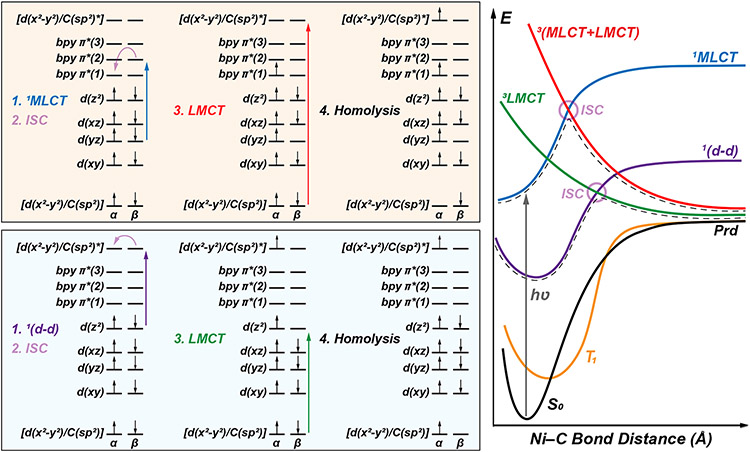Figure 10.
Two plausible excited state mechanisms of Ni(II)─C bond homolysis. Initial 1(d-d) or 1MLCT excitation (blue or orange boxes, respectively) is followed by ISC and 3LMCT formation. On the right, this surface hopping mechanism is exemplified with the shaded purple circles connecting the 1(d-d) excited-state surface (purple line) to the one-electron triplet repulsive 3LMCT surface (green line), or 1MLCT excited-state surface (blue line) to the two-electron triplet repulsive 3(MLCT+LMCT) surface (red line). Corresponding plots computed at the TD-DFT and CASSCF/QD-NEVPT2 levels are provided in Figures S68-69. For clarity, exchange splitting between α and β orbitals is neglected. Illustrative orbital energies and ordering on the left are provided from the ground state and are held constant through steps 1-4; right panel gives a more accurate depiction of relative state energies, reflecting a small thermal barrier relative to the excitation energy.

